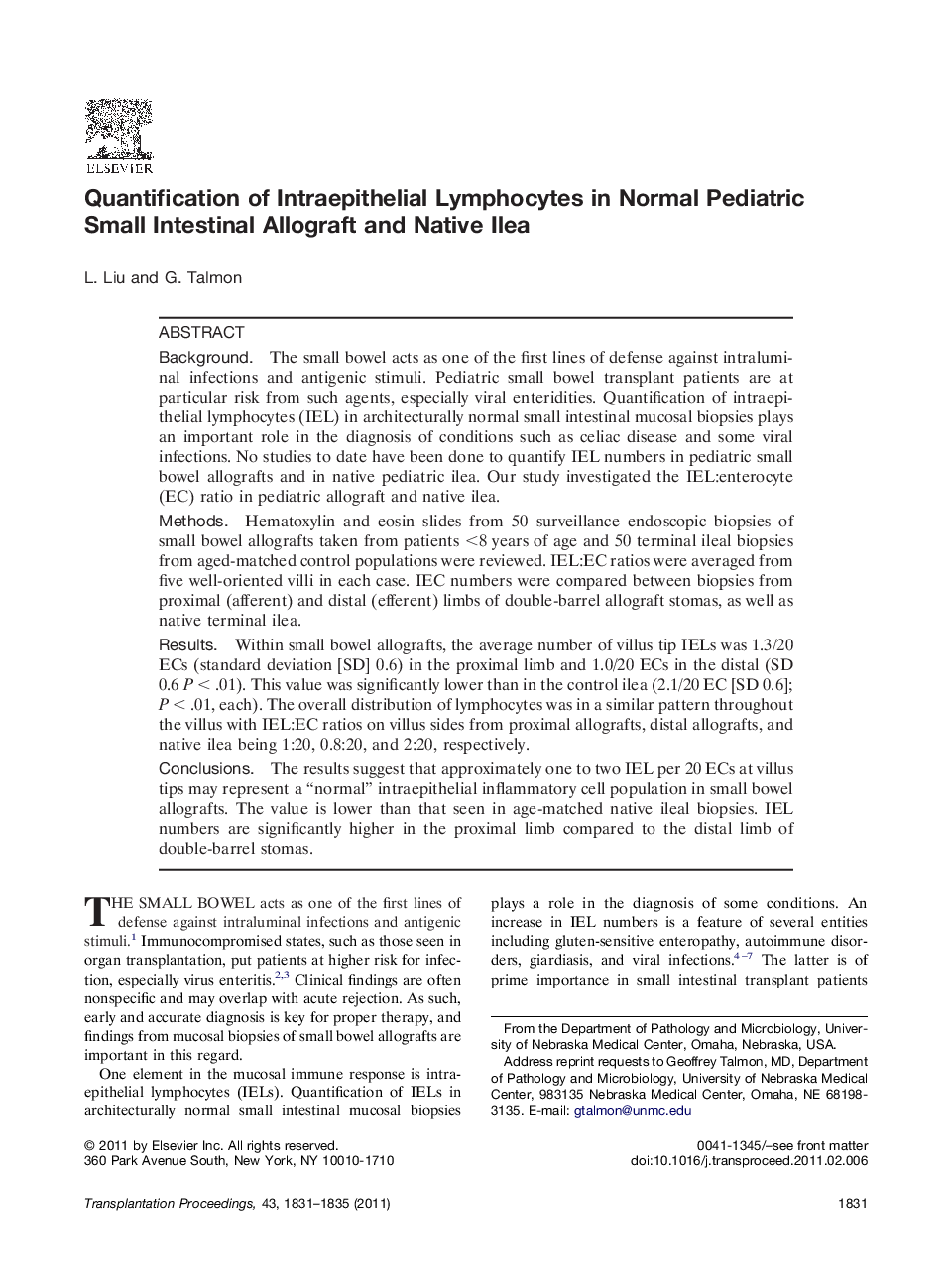| Article ID | Journal | Published Year | Pages | File Type |
|---|---|---|---|---|
| 6249347 | Transplantation Proceedings | 2011 | 5 Pages |
BackgroundThe small bowel acts as one of the first lines of defense against intraluminal infections and antigenic stimuli. Pediatric small bowel transplant patients are at particular risk from such agents, especially viral enteridities. Quantification of intraepithelial lymphocytes (IEL) in architecturally normal small intestinal mucosal biopsies plays an important role in the diagnosis of conditions such as celiac disease and some viral infections. No studies to date have been done to quantify IEL numbers in pediatric small bowel allografts and in native pediatric ilea. Our study investigated the IEL:enterocyte (EC) ratio in pediatric allograft and native ilea.MethodsHematoxylin and eosin slides from 50 surveillance endoscopic biopsies of small bowel allografts taken from patients <8 years of age and 50 terminal ileal biopsies from aged-matched control populations were reviewed. IEL:EC ratios were averaged from five well-oriented villi in each case. IEC numbers were compared between biopsies from proximal (afferent) and distal (efferent) limbs of double-barrel allograft stomas, as well as native terminal ilea.ResultsWithin small bowel allografts, the average number of villus tip IELs was 1.3/20 ECs (standard deviation [SD] 0.6) in the proximal limb and 1.0/20 ECs in the distal (SD 0.6 P < .01). This value was significantly lower than in the control ilea (2.1/20 EC [SD 0.6]; P < .01, each). The overall distribution of lymphocytes was in a similar pattern throughout the villus with IEL:EC ratios on villus sides from proximal allografts, distal allografts, and native ilea being 1:20, 0.8:20, and 2:20, respectively.ConclusionsThe results suggest that approximately one to two IEL per 20 ECs at villus tips may represent a “normal” intraepithelial inflammatory cell population in small bowel allografts. The value is lower than that seen in age-matched native ileal biopsies. IEL numbers are significantly higher in the proximal limb compared to the distal limb of double-barrel stomas.
